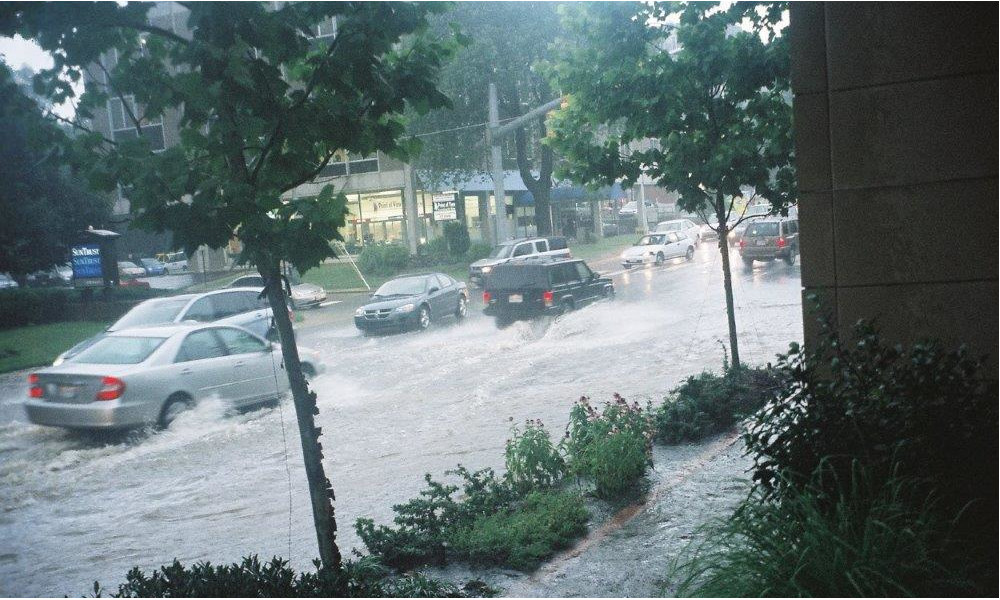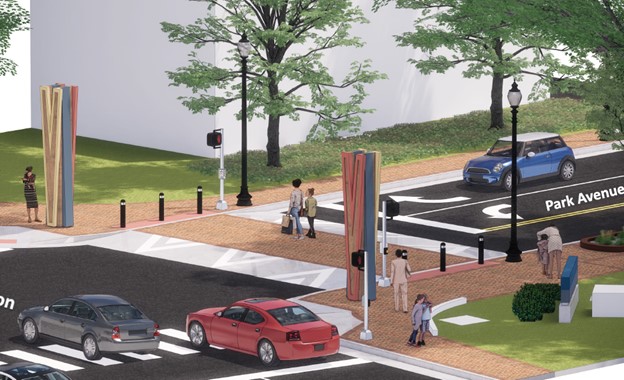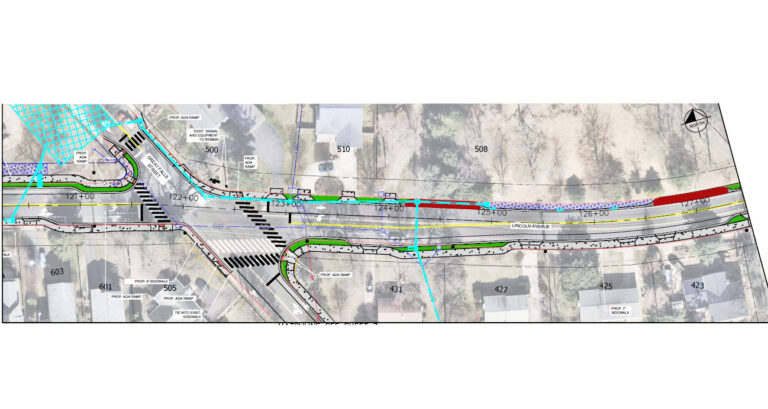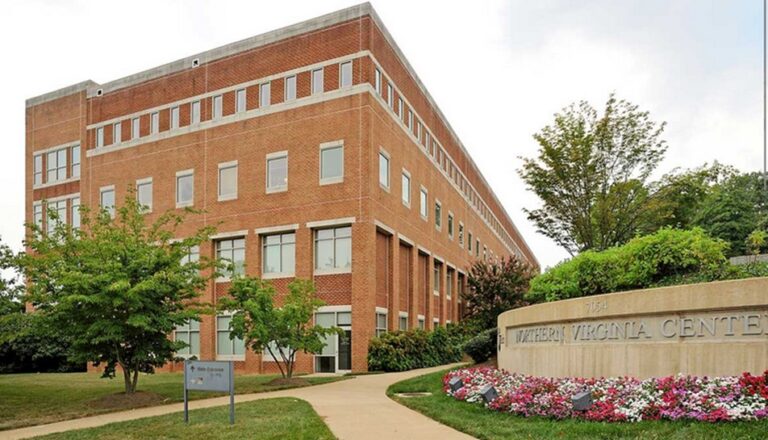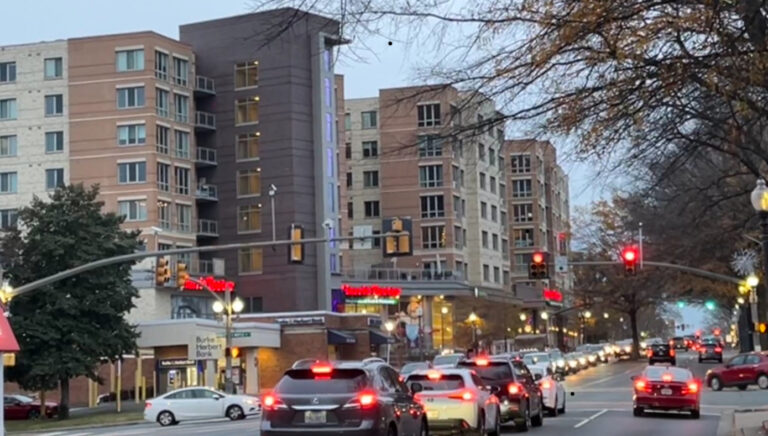Stormwater in the City: There’s Flooding in our Future!
By Fred Thompson
(Photo above: W Broad St at S Lee St intersection, June 2006.)
In a Town Hall for the Falls Church City Fiscal Year 2026 Budget, City Manager Wyatt Shields described stormwater management as “a crucial service that the City provides.” It’s also a largely invisible service. Until your road or your home floods, you don’t get very good insight into how well our systems operate.
So, how well is the City managing stormwater?
According to the City’s staff report on the Lee Park Townhome project: “The City’s stormwater sewer system does not have sufficient capacity to convey the 10-year storm event under gravity conditions.“ According to the FY2026 Falls Church City budget: “The system has aged or was built with insufficient capacity and, consequently, in many parts of the City, fails to adequately carry a 2-year storm event (i.e., a storm with a 50% chance of occurring during any given year).”
The FY2026 budget is a patch-and-fix maintenance budget of $2,337,000. It includes funds “…to replace pipes that have exceeded their expected life and are in poor shape.” It does not fund improvements to the system that are necessary for modern storm events. It does not increase capacity commensurate with the development we have seen in the last two decades. It neither accommodates existing nor plans for future growth. [See recent Pulse posts on the City sewer system, beginning with Sewer Saga—A Deal with Fairfax and $45+ Million in Costs Over 6 Years, March 22, 2025.]
Further, total staffing for the proposed stormwater effort seems inadequate and unfocused. The FY2026 budget proposes 3.485 FTE for stormwater management. It calls for the new Department of Public Work director to spend a little less than one third of her time supervising the work of 11 people (only three of whom spend as much as half of their time on the program). There is not a single full-time employee dedicated to the effort.
In the recent Budget Town Hall, the City Manager noted that in the 2000s and 2010s, an analysis of City stormwater capacity and sewer pipe conditions was conducted. A lot of large multi-story special exception buildings have been built since then. Also, the City has created new “build-by-right” authorities for T-1 District properties and is close to completing such authorities for residential accessory dwellings. The City Council seems to support further increasing City density to help address the national housing shortage. All of this adds to the volume of stormwater that the City needs to effectively manage. Investments need to be made to support this.

What future challenges face our stormwater systems?
Though some still deny it, our environment is changing, and the risk of large storms is significantly increasing. Even upgrading to handle a one-in-10-year storm (an old state standard still in force) is not likely to be adequate. The City Manager noted that there were multiple storms in the one-in-100-year range as recently as 2019/2020. The state law is set at a level that is too low to protect us. Simply complying with state code will not be enough. The environment is a growing threat. Every few months, we see large multi-day storms throughout the country that would overwhelm our systems and cause significant damage to our citizens, our commerce, and our transportation systems.
The City’s primary tool to control stormwater has been peak stormwater mitigation requirements for new developments. The peak runoff reduction standards only control the runoff rate for a 24-hour period. If the City system is already overloaded (which ours is), this will not protect us in a multi-day storm.
The City has often imposed building-unique stormwater requirements for buildings built under special exception authority that exceed build-by-right standards. These include requirements for retention tanks and other stormwater management features. These are subject to building-by-building negotiations. This helps reduce additional pressures on our systems, but it does not address the underlying stormwater system deficiencies.

Lee Park Townhome site planning – a recent case example
The Lee Park Townhome site plan approval process provides a look into the limits of controlling stormwater management for build-by-right properties through site plan reviews.
In the case of this project, the only people assessing stormwater impacts on behalf of the City were third-party contract personnel. The Broadway Condominium Association asked several times to engage City staff on overall stormwater planning, but they would not meet with us. The site plan review process only allows for assessment of the developer’s compliance with the peak 24-hour runoff requirements in the City code. Neither the City staff nor the Planning Commission can deny a site plan approval if the runoff from a development site cannot be handled by the City stormwater systems.
It took months of discussion for us to even determine what drains were included in the City system. In the case of the Lee Park Townhome development, one of the three townhome complexes will use a drain identified as a “private drain” on the Broadway Condominium property plat. In the final Planning Commission meeting where the site plan was approved, the City finally stated that this drain is a public City-managed drain; but the City has never inspected the drain to determine whether it can handle the new water source.
In addition to that source, a significant amount of water may flow from other properties behind the Broadway, which can also be developed by right. Having adequate capacity is a cost that must be borne by the City. The developer has no responsibility for this cost. This further demonstrates that the City stormwater system is not fully and adequately defined or managed.
How are others addressing these challenges?
Arlington County faces the same climate challenges and aging infrastructure challenges that Falls Church City is experiencing. However, unlike Falls Church City, it is substantially investing in improving its stormwater management. Falls Church City’s Capital Improvements Program (CIP) calls for an investment of $3 million over six years to improve our systems.
By contrast, Arlington’s CIP calls for stormwater capital investments of $331 million over the next few years – over 100 times the level of investment that the City Budget proposes. Two-thirds of the Arlington investment is for stormwater capacity improvement. It is true that Arlington is bigger than Falls Church City, but it is not 100-times bigger: Arlington is a little over four times the acreage of Falls Church City and has 15 times our population.
What needs to be done?
The City needs to design and fund a comprehensive study that plans for the much-increased density of development that the City has already approved as well as potential future increases. We need a stormwater system for the Little City that we adequately support what we have built and is also adequate for the growth ahead.
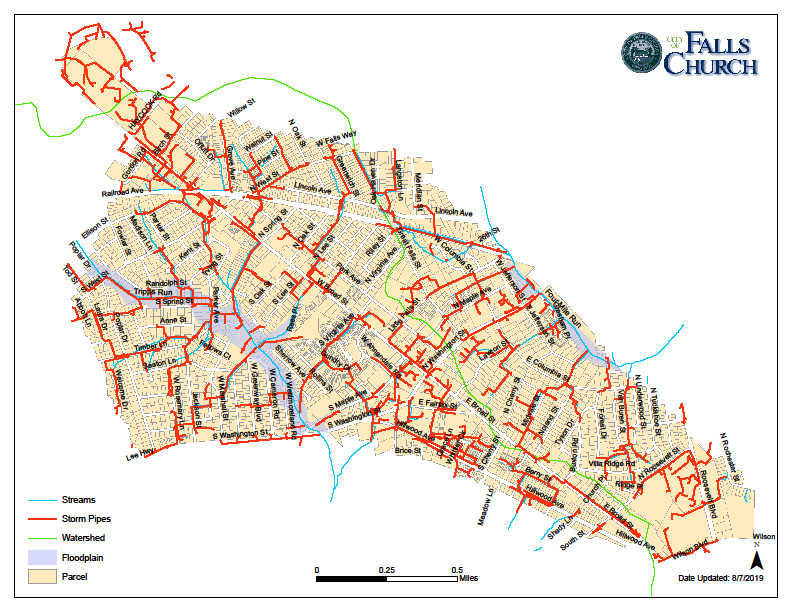
Source: Townhall presentation material, August 7, 2019.
The City’s budget process is underway now and concludes in early May. I hope that all citizens will write the City or speak up at City Council meetings demanding that the City make the investments that are necessary.
While a comprehensive study is underway, there are two other tasks that the City should undertake:
- The City needs to do the assessment of T-1 rezoning on its stormwater and sewage infrastructure capacity and make investments necessary to support these developments. This should have occurred while the T-1 ordinance was under evaluation by the City. In Arlington County, residents sued the City for not considering these issues in its “Missing Middle” decisions. A judge ruled that future site plan approvals in Arlington needed to be suspended until these types of studies are conducted. Citizens of Falls Church City should not have to sue our government to get it to comply with state law and court decisions.
- In the case of the Lee Park Townhome site plan that has already been approved, the City needs to fully examine the impacts of rerouting stormwater behind the Broadway and make necessary improvements to reduce the risk of flooding and property damage at the Broadway and adjoining properties.
Fred Thompson was the Broadway Condominium Homeowners Association stormwater task force chairman in 2020-21. He currently represents the 81 unit owners and 163 residents of the Broadway Condominium as Task Force Director for Community Relations.

